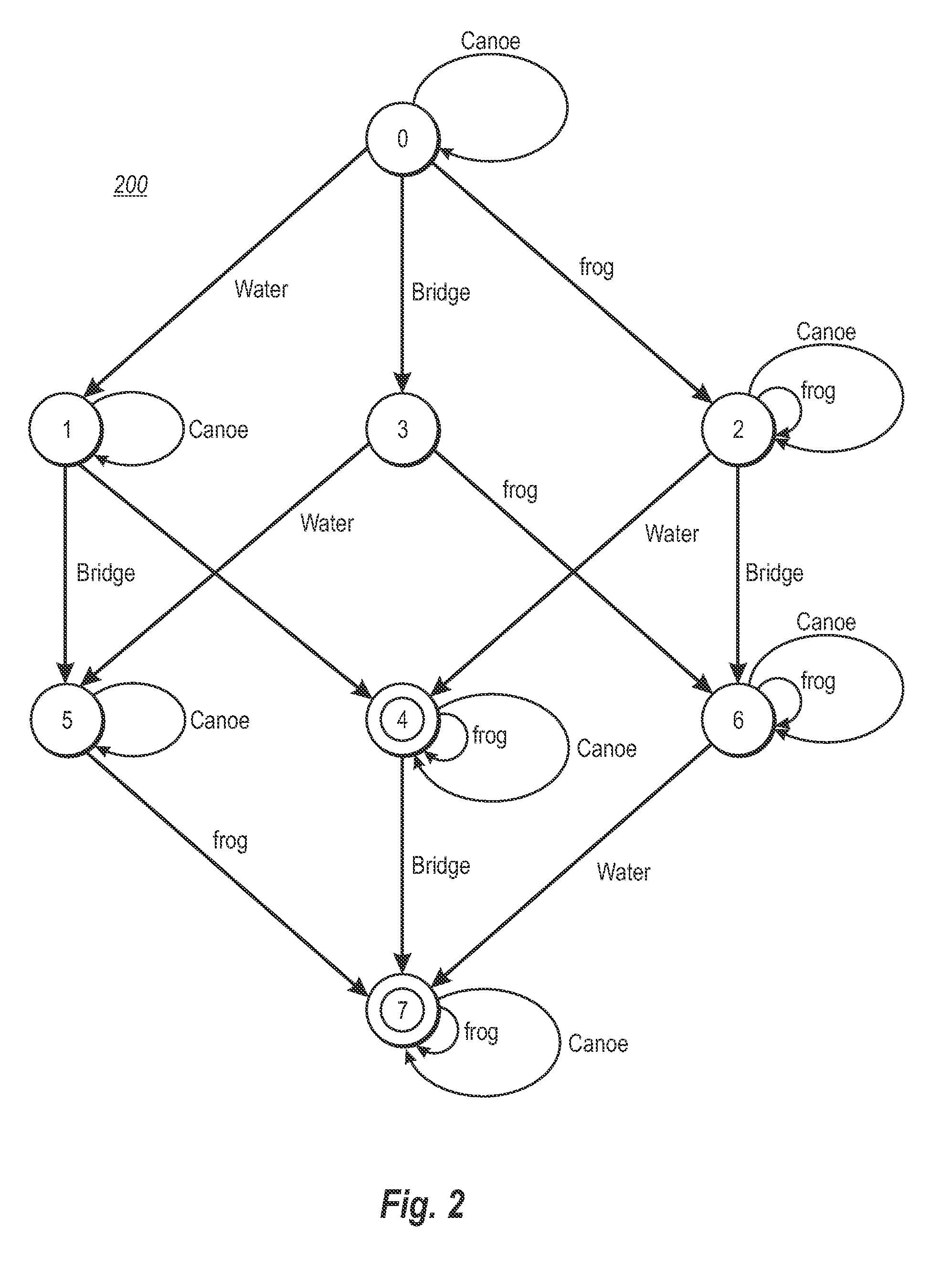Modular forest automata
a module-based, automata technology, applied in the field of modules, can solve the problems of inability to sub-type, inability to store and exchange values between distributed components, and large messages exchanged among distributed program components
- Summary
- Abstract
- Description
- Claims
- Application Information
AI Technical Summary
Benefits of technology
Problems solved by technology
Method used
Image
Examples
Embodiment Construction
[0027]Embodiments described herein relate to methods, systems, and computer program products for analyzing regular tree patterns. Additional embodiments described herein relate to methods, systems, and computer program products for expressing a transformation or transformations of regular tree patterns. The embodiments of the present invention may comprise a special purpose or general-purpose computer including various computer hardware, as discussed in greater detail below.
[0028]FIG. 1 describes an example computing environment 100 in which the embodiments described herein may be practiced. The computing environment 100 includes one or more computer processors 110. The computing environment 100 also includes one or more instances of computer memory 120. The computer memory 120 may be any computer-readable memory as known to be suitable and includes (but is not limited to) RAM, SRAM, and flash. Computer memory may also be persistent storage 130 such as a hard disc, solid state disc ...
PUM
 Login to View More
Login to View More Abstract
Description
Claims
Application Information
 Login to View More
Login to View More - R&D
- Intellectual Property
- Life Sciences
- Materials
- Tech Scout
- Unparalleled Data Quality
- Higher Quality Content
- 60% Fewer Hallucinations
Browse by: Latest US Patents, China's latest patents, Technical Efficacy Thesaurus, Application Domain, Technology Topic, Popular Technical Reports.
© 2025 PatSnap. All rights reserved.Legal|Privacy policy|Modern Slavery Act Transparency Statement|Sitemap|About US| Contact US: help@patsnap.com



